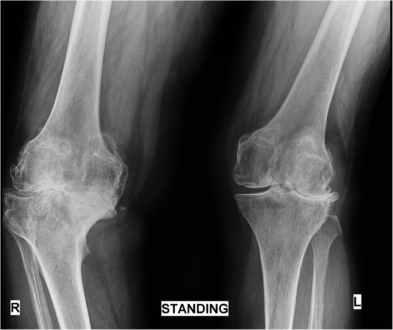The abnormal deformity in one knee is termed windswept deformity. It is most commonly seen in children. The windswept deformity is usually observed in Africans. Fulford and Brown were the first clinical researchers to study deeply about this condition. It is associated with metabolic bone disorders.
Skeletal deformities are the result of bone disorders. Legs are the most affected part of the body. The primary reason behind this can be defective mineralization, malnutrition, and physical disturbances. These disorders are common before puberty.
Other issues like hypophosphatasia, rickets, and renal disorders are frequently part of the windswept deformity. The management of bone deformities is daunting. It depends on the condition of the patient. Age is also a factor but usually, the windswept deformity is seen during the early years of children. This article is all about this knee deformity and how it can be diagnosed and treated.
Windswept Deformity Location
The pelvis is involved in knee deformity. Pelvic rotation is common in these types of conditions. There is a posterior pelvic tilt observed with the posture of these patients. When the patient is in a wheelchair the lower extremities are not aligned properly which results in difficulties.
To describe this situation, you need to imagine the patient’s legs in the wheelchair will look like a gust of wind swept his legs to one side. Abduction of the hip and one leg on the left side is common. The other leg is adducting inwards and rotates internally. The posture of the spine follows the pattern of the hips.
Sometimes the abnormality is fixed and if it is tried to cure, there might be chronic pain. In other words, spinal rotation is associated with the rotation of the pelvis. The location of the deformity is one knee or it can affect both.
Windswept Deformity Symptoms
Healthy children are frequently prone to windswept deformity. Valgus deformity develops during the early years of childhood. Mostly when the child is two or three years old. It would give a windward appearance in one knee while the other knee follows in the same direction.
The normal bone development is halted and the child has to use a wheelchair for movement. Sometimes it is accompanied by acute or chronic pain in the joints and the bones. Inflammation is another common symptom of this deformity. This abnormality can be unilateral and bilateral.
It can only take a few weeks, in the transformation to the aggressive alignment issues. Slight changes in the knee or leg movements or shape should be noticed promptly and referred to a specialist health care professional. If it’s left untreated, this deformity will be fixed and remain static for the rest of your life.
Windswept Deformity Causes
Although there is no specific etiology or cause discovered regarding windswept deformity so far. But few conditions can result in this deformity as in inflammatory arthritis. Skeletal dysplasia is one of its common examples or rheumatoid arthritis can also be the cause.
Rickets in childhood, malnutrition, sickle cell diseases, and metabolic disease can also lead to windswept deformity. The abduction or adduction movements increase significantly when a patient suffers from these deformities. The physical function of the knee declines rapidly when there are alignment problems.
Genetic abnormalities can be another leading cause in this case. As sometimes, genes carry these deformities to the next generations. It is tedious to treat windswept deformity in children.
Windswept Deformity Diagnosis
To diagnose windswept deformity, various radiological tests including X-rays and MRI are recommended. Osteochondritis is the general feature of this deformity. It depends on the severity of the case. In few cases, the distal part of the femur is involved, while in some cases tibia is involved. There is a possibility that both can be affected as well.
The portion of epiphysis becomes wedge-shaped. Along with the radiological tests, a complete blood count test is also recommended to check the minerals and blood cell count. The imbalance in potassium, magnesium, and sodium can worsen the condition. It is advised to seek immediate help whenever there is a hint of deformity.
Windswept Deformity Treatment
Treatment options for windswept deformity are still under research. Various clinical researches have proven that surgical procedures are the best option for people suffering from the windswept deformity. However, in certain cases, surgeries are not recommended. Following are the conditions:
- Bone defects
- Bilateral affection
- Grotesque deformities
- Locomotor disability
- Nerve injury
Surgical options are better for the patients as it is a bit less painful and stressful. There are chances that complications in the surgery might occur. The recurrence rate is minimal. In the procedure, both knees are replaced. The patient is under general anesthesia. The rehabilitation program is suggested after the surgeries which include physiotherapy.
 Health & Care Information
Health & Care Information



